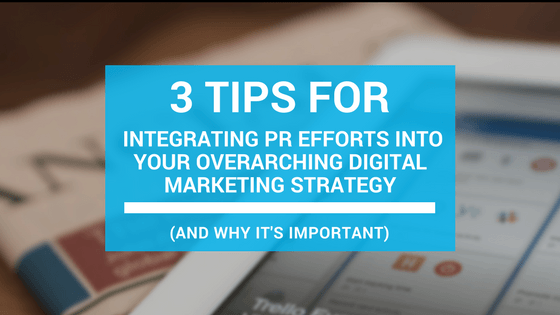Marketing activity in the digital space has increased exponentially in the past five to seven years. We live the results of it every day. Instead of picking up the morning paper, we flock to our smartphones, tablets, and laptops. On top of that, it’s nearly impossible to go online without becoming the unwitting target of countless marketing tactics. We see this in social media, banner and pop-up ads on the websites we visit, and even in our email inboxes.
Traditionally, marketers and brands alike recognize the importance of including PR efforts in all aspects of a marketing plan. We often see that not all brands have adapted this planning into their digital executions, and this is a big mistake. When dispersing brand messaging, consistency is key. Not only that, but digital platforms provide new and unique opportunities for relationship building.
As a typical rule of thumb: All marketing elements of a brand should work together in symbiosis. Here are a few quick tips on how to make all the pieces work together:
1. Execute all aspects of your marketing to work as a whole, not in silos.
Everything from your website, to your press releases, to your social media posts, e-blasts and commercials need to use the same branding, tone of voice, messaging style, keywords, etc. It is okay to share more sharply focused things only in specific channels, but make sure to share the big-picture things across the board. This will benefit your efforts not only from an ROI standpoint, but it also aids in establishing credibility and overall brand voice. Toward the end of a campaign or other measurement period, you will have a better idea of what works and what doesn’t on each platform.
2. Treat your digital messages as a public appearance.
Public relations managers spend hours upon hours preparing their clients on what to say when they are in the spotlight. Similar preparation and continuity must be executed in the digital space—especially in social media and e-marketing. Plan for how to react to potential crises, opportunities and questions. This is part of the relationship and credibility-building process.
3. Take special care to monitor what is being said about your brand.
It is important to periodically monitor your overall brand sentiment, especially in the aspect of providing and improving upon customer service. As an agency, this can also help you stay ahead of the game in the event of larger problems or opportunities with competitors. This is likely one of the easiest initial changes to make; we recommend signing up for a service such as Google Alerts, Mention, or Talkwalker.
Don’t be afraid to experiment with different strategies. What works best for one brand does not work best for all—but remember, consistency across the channels is key. Also, keep in mind that significant changes in your KPIs don’t happen overnight. Rome wasn’t built in a day, and going viral isn’t always a good thing. Keep up a good, steady effort, and over time you will see your brand become the beautiful butterfly it was meant to be.
View these three tips as starting points from which to grow your efforts, and stay tuned for more tips on digital PR efforts right here on The Jemully Post!







